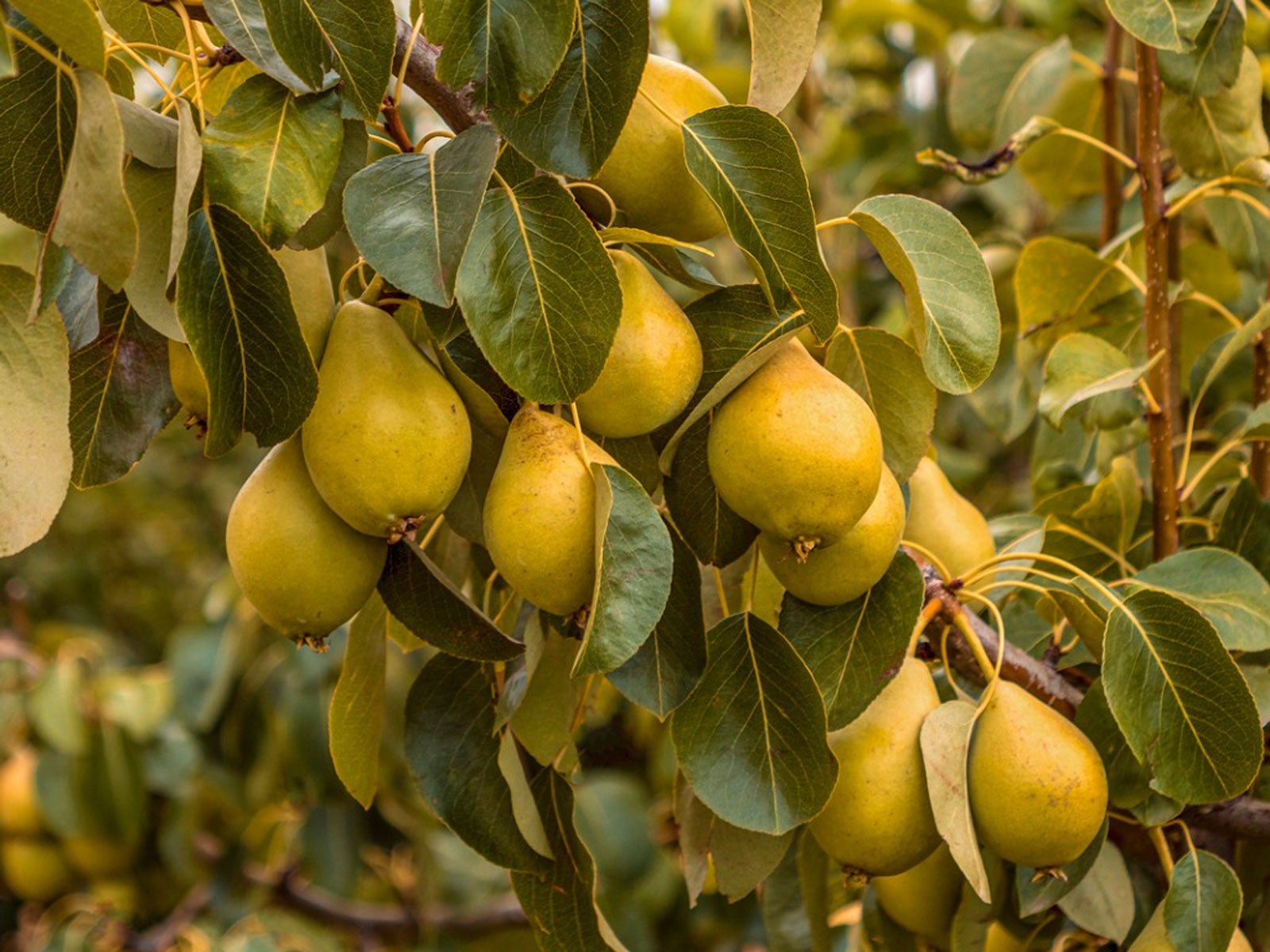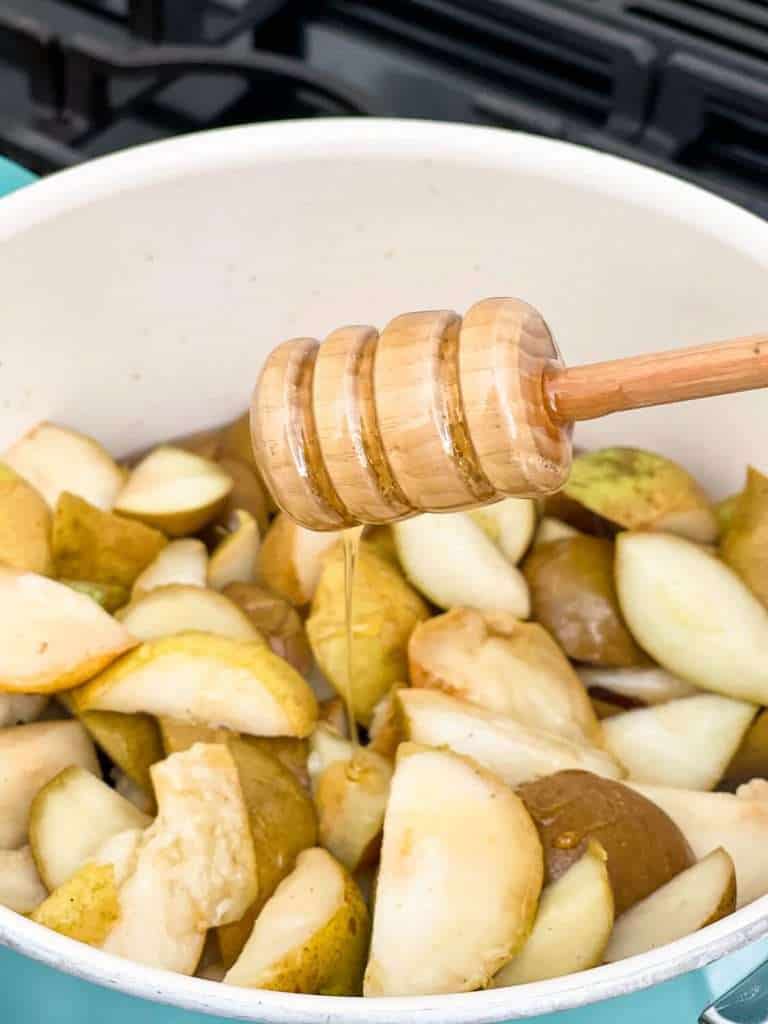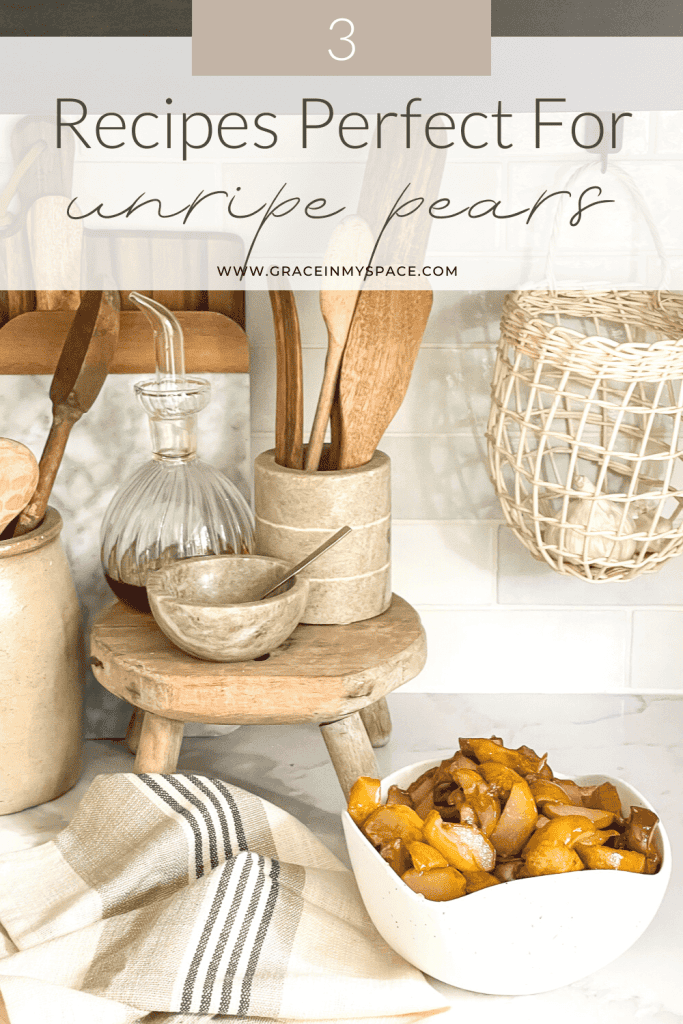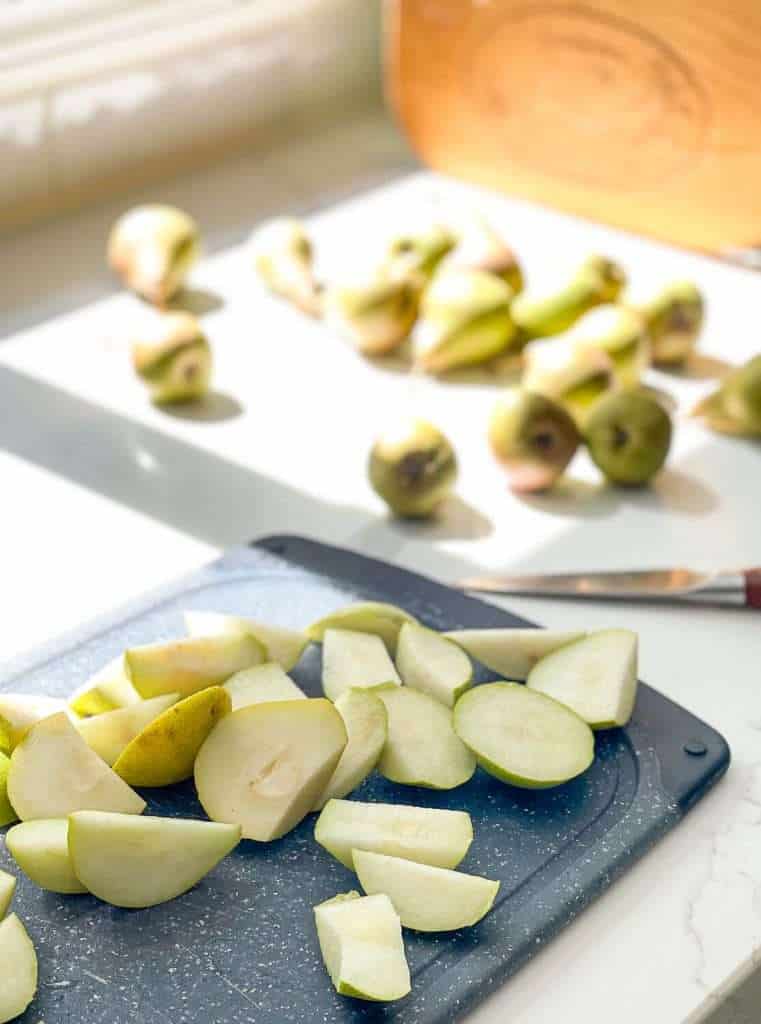Do you have a lot of hard, unripe pears? Each year our pear tree overproduces. Besides that, it wasn’t properly pruned for years, leaving us with smaller immature fruit. Over the years, I’ve learned what to do with unripe pears so they don’t go to waste.
As a gardener with a productive pear tree, you know the joy of harvesting a bountiful crop each fall. But you may also find yourself wondering what on earth to do with all those pears!
While it’s tempting to let the excess fruit rot on the ground, there are many great ways to use up pears when you have an overloaded tree. With some creativity in the kitchen, you can enjoy your homegrown pears all season long.
Harvesting Pears
Timing is important when picking pears. Unlike some other fruits, pears ripen off the tree once harvested. Leaving them on the branches too long results in a soft interior before the outside is ripe.
The best method is to gently lift the pear upward. If the stem breaks off easily, the pear is ready. If the stem doesn’t break, leave the pear to ripen further. Harvest times vary by pear variety, typically between August and October.
Storing Pears
Freshly picked pears last for several weeks when refrigerated below 40°F. Allow refrigerated pears to ripen at room temperature a few days before eating
You can also store ripe pears in the freezer. Simply core, slice, and freeze in a single layer on a cookie sheet before transferring to bags. Use frozen pear slices for smoothies, baking, or snacking once thawed.
Eating Pears Fresh
When pears are perfectly ripe and juicy, enjoying them raw is hard to beat. Slice and eat them plain for a healthy snack. Or liven them up by
- Sprinkling with cinnamon or drizzling with honey
- Dicing and adding to salads
- Mixing into plain Greek yogurt
- Quickly grilling slices and serving with cheese
- Making a simple fruit salad with other fall fruits
Preserving Pears
Preserving allows you to enjoy delicious homegrown pears all year long. Popular methods include
- Canning pear slices in syrup
- Freezing and using for smoothies
- Drying slices or halves for snacking
- Simmering into thick, spreadable fruit butter
- Pickling into spiced rings or spears for charcuterie boards
Baking with Pears
Baking accentuates pears’ natural sweetness. They pair nicely with warm spices, nuts, citrus, and more. Try incorporating them into:
- Crisps, crumbles, or cobblers
- Muffins, quick breads, or tea cakes
- Hand pies with sugar, spices, and flaky crust
- Stuffed, baked pear halves with blue cheese and walnuts
- Poached pears in red wine for an elegant dessert
Cooking with Pears
While we often use pears in sweets, they also add pleasant flavor to savory dishes. Add diced or sautéed pears to:
- Pork, chicken, or duck entrees
- Hearty fall salads and slaws
- Risottos, pilafs, or oatmeal
- Stuffed acorn squash or baked squash halves
- Sandwiches, bruschetta, or flatbreads with cheese
Juices and Drinks
The natural sweetness of pear juice enhances beverages like:
- Smoothies, shakes, and lassis
- Spritzers with soda water and mint
- Mulling spices simmered with apple cider
- Infused liquor such as pear vodka or rum
- Fresh fruit agua fresca with lemon, ginger, and honey
Simple Pear Desserts
Pears require minimal prep but lend an elegant touch to easy desserts. Bake them into:
- Individual tarts or crumbles
- Layered trifles or parfaits
- Free-form galettes with pie dough
- Toppings for cheesecake or panna cotta
- Quick sautés in butter and sugar
Using Pear Scraps
Don’t throw away those peelings, cores, and scraps after preparing pears! Transform them into:
- Pear sauce simmered in the slow cooker
- Dried, ground pear powder for baking
- Strained juice as a substitute for apple juice
- Infused vodka or other liquor
- Substitute for candied ginger in recipes
With so many ways to use up your pear bounty, there’s no reason to let any go to waste. A little creativity in the kitchen goes a long way to enjoying fresh pears at their seasonal best.

What to do with Pears that Won’t Ripen
However, if you’re like me, you inevitably have pears that just never seem to want to get ripe! There could be a few reasons for that.

The most common is that they were picked too soon. But even hard pears can be put to good use! So, what can I do with pears that won’t ripen?
Make these three delicious recipes!

How to Tell When a Pear is ready to Harvest?
Pears ripen OFF the tree.
If you leave a pear on the branch too long, it will turn mushy inside before it feels soft on the outside. So, how do you know when a pear is ready to harvest?

The easiest method is to try picking it. Grasp the pear by the bottom and gently lift straight up.
If the stem breaks off easily, it was ready. If it doesn’t break, leave it on the branch until it comes off without resistance.
Different pear species are ready at different times between August and October in most locations. Check your local area to see when it’s most likely time to start checking your pears!
How to Grow a Pear Tree using Store-Bought Pears | creative explained
FAQ
What to do with pears from your tree?
- Grate. Pears don’t properly ripen until they have been picked. …
- Freeze. Like most fruits, pears are happy to spend a while in the freezer. …
- Jam. …
- Chutney. …
- Booze.
Can you eat pears from a pear tree?
Bradford Pear trees (Pyrus calleryana ‘Bradford’) are primarily cultivated for their ornamental qualities, such as their attractive flowers and symmetrical shape. While they are part of the pear family, they do not produce edible pears. Instead, they may produce small, hard fruits that are not palatable to humans.
What is the best way to preserve fresh pears?
Pears can be preserved by canning, freezing, or drying. They also star in specialty jams, butters, relishes and chutneys! The natural sweetness of dried pears makes them a tasty high energy snack. Although canning is preferred, full-flavored pears that are crisp and firm can be frozen.
